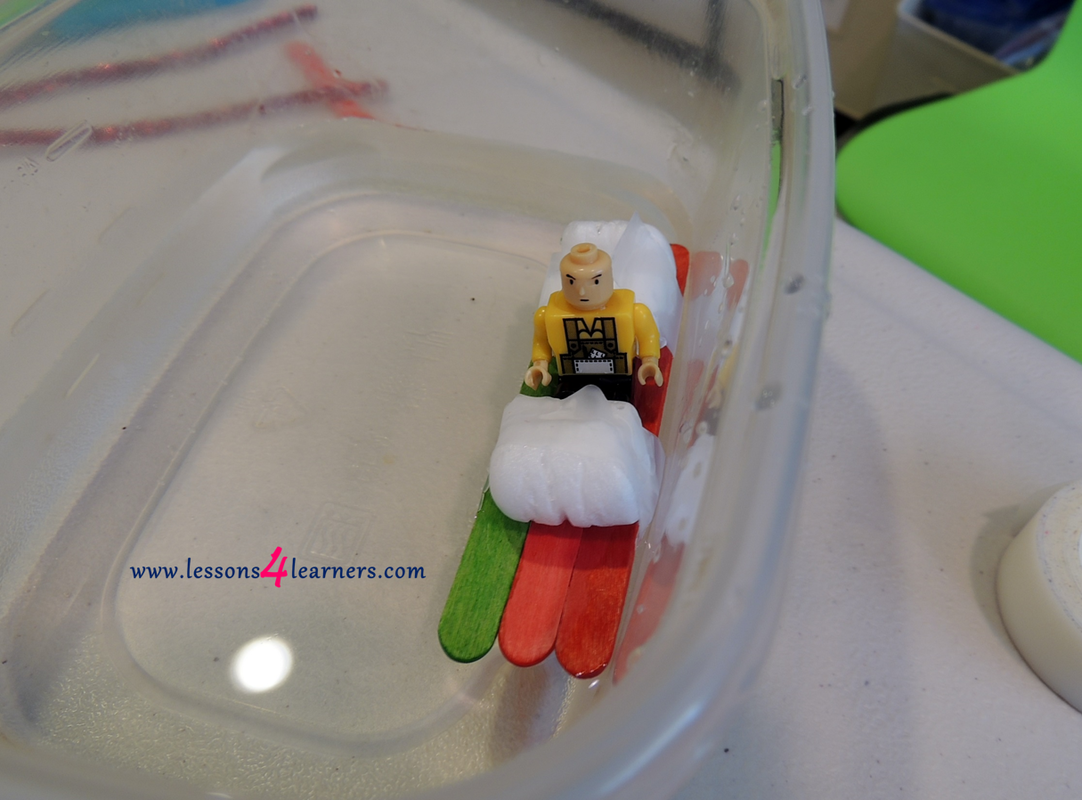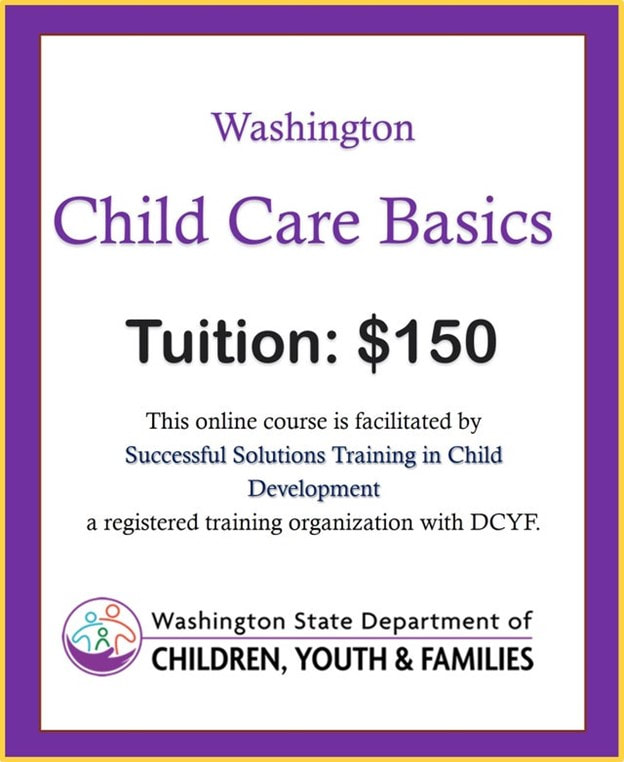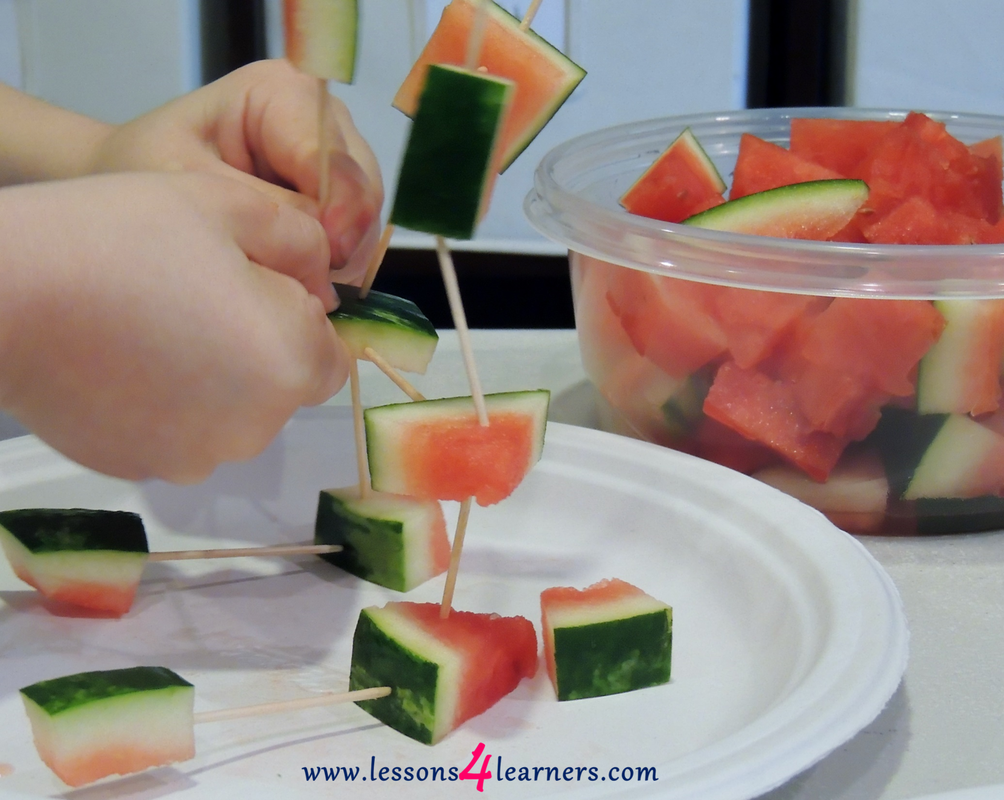Get Hank To The Other Bank
|
Activity:
Get Hank ToThe Other Bank
Lesson plan developed by Aurora Tollestrup, BS Ed
Age Group:
Objectives:
Children will:
|
|
EALR 3
Grades 2-3: Develop a solution to a problem by using a simplified technological design process. Investigate the use of tools. Materials:
|
Anticipatory Set:
- Begin by introducing “Hank” to the class.
- Tell the children that Hank needs to cross the “river” and get to the other riverbank, and he’s asking your class for help.
- Hank cannot touch the water!
- Hank needs help moving, but cannot be touched by a human.
Procedure:
- Divide the class into teams of 4 children.
- Each team is given 5 minutes to discuss and sketch a design plan for their solution to get Hank to the other bank.
- Next, the children must work together to use the assorted materials to build their designs.
- When all teams are finished, they must all take a turn trying to get Hank to the other bank using their designs.
Assessment:
- Observe and record the use of prior knowledge in various subjects such as math and science.
- Observe and record communication strategies and note conflicts, resolutions, and other collaborations challenges and strengths within teams.
Engineering
|
“There's nothing I believe in more strongly than getting young people interested in science and engineering, for a better tomorrow, for all humankind.” -Bill Nye
Engineering is the study of the design and creation of products or the process of solving problems. Engineering encompasses math, science, and technology. It is a valuable subject to learn and experience. Teaching engineering is teaching the process of designing and building something that is needed. You can also think of it as the process of creating those pieces of technology that are critical to serving a purpose or meeting a need. Imagine taking a group of students-of any age-and giving them some specific materials along with a problem to solve and being able to watch them collaborate, problem solve, hypothesize, explore, and come to a consensus on what the collective opinion of success is. Along with this process comes failure, which, in STEM terms, is not seen as failure at all, but instead as an opportunity to learn and grow. |
How to include engineering lessons in your program:
- Encourage teamwork and problem-solving in all things-not just STEM activities.
- Give students the opportunities to struggle enough to hopefully overcome the challenge that they are faced with. Offer suggestions if they become frustrated.
- Encourage critical thinking skills in every aspect of your program.












